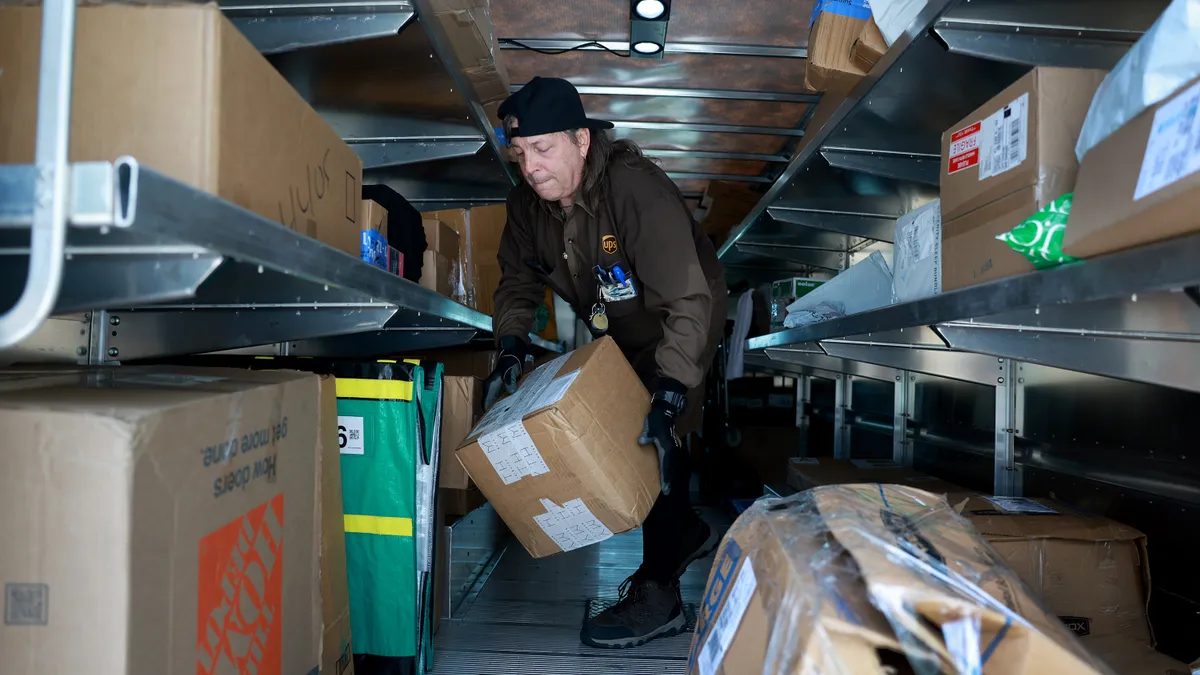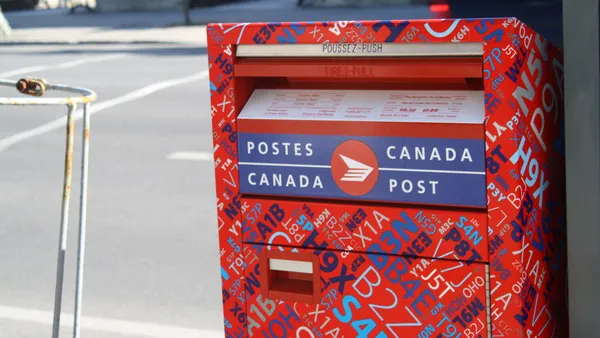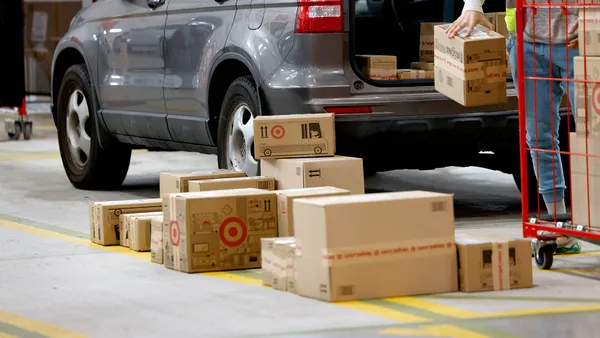Dive Brief:
- Shippers added more carriers to their delivery mix in June and July as many prepared to mitigate disruptions from a potential UPS strike, according to project44 data released this month.
- The average number of last-mile carriers per company account reached 6.17 in June, the highest project44 has recorded in a given month. That number remained nearly the same in July at 6.14 carriers per account.
- UPS and the International Brotherhood of Teamsters reached a tentative contract agreement on July 25, averting a feared Aug. 1 strike that would have severely disrupted the company's network and further increased demand for alternative carriers. The window for union members to vote on the agreement closes Tuesday.
Carrier diversification surges in June, July
Dive Insight:
June and July aren't typically months known for upticks in carrier diversification, according to project44. Shippers usually add more carriers to their delivery mix in August and September in preparation for the peak holiday shipping season.
"However, this year's unusual trend could directly stem from the looming threat of a UPS strike," the report said.
The UPS-Teamsters negotiations were one reason experts forecasted a further uptick in carrier diversification activity this year, adding to the momentum that smaller parcel carriers gained during the pandemic-fueled capacity crunch of 2020 and 2021. Shipper interest in adding new carriers appeared to taper off earlier this year, project44 reported in May, but that quickly changed as negotiations between UPS and the Teamsters heated up.
UPS shippers diverted about 1 million packages daily from the company in Q2 due to potential strike concerns, executives said on an earnings call this month. UPS estimates FedEx, the U.S. Postal Service and a mix of regional carriers each grabbed one-third of this volume.
With UPS fighting to win back the diverted volume, it remains to be seen if June and July's heightened level of carrier diversification can be sustained. "Over-diversification" is emerging as an issue as capacity constraints have eased and shippers are fishing for lower rates, according to Josh Dinneen, chief commercial officer of parcel carrier OnTrac.
"The better cost-service combination that you can get with the least amount of carriers is starting to become maybe the new trend," Dinneen said in an interview with Supply Chain Dive.














